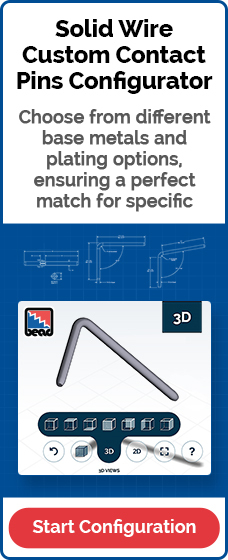Dimmable Glass—it's a new technology you may not have heard much about yet. Still, it's quickly gaining popularity in a variety of industries.
This includes both the Automotive and Aerospace industries. And PCB overmolding is a crucial technology in this industry!
But don't worry if you don't know much about it, we've got all the facts and details you need. This blog post covers it all!
What Is Dimmable Glass?
Dimmable glass is a type of smart glass that can be manually or automatically adjusted to control the amount of light that passes through it. The glass is made from materials, which change color when an electric current is applied. By varying the current, the amount of light allowed to pass through the glass can be precisely controlled.
The glass is made from materials, which change color when an electric current is applied. By varying the current, the amount of light allowed to pass through the glass can be precisely controlled.
This glass can also be used to reduce glare and improve privacy. The glass can be switched from transparent to opaque with the flick of a switch. Making it an ideal solution for applications where privacy is essential.
Dimmable glass is already being used in a variety of settings, including office buildings, hospitals, and even homes. As the technology continues to evolve, dimmable glass will likely become increasingly commonplace.

In the Automotive and Aerospace Industries
In the automotive industry, dimmable glass can create many things including privacy screens, sunroofs, and windshields with adjustable tints.
By varying the amount of light allowed to pass through the glass, dimmable windows can help reduce glare, heat, and UV exposure. In addition, this glass can also create unique visual effects for branding and interior design.
Some high-end vehicles have been outfitted with illuminated logos projected onto the windshield when the car is turned on. As this glass becomes more prevalent, we will likely see more innovative uses for this versatile material.
In the Aerospace Industry, aircraft windows with dimmable glass can create adjustable tints. The ability to control the amount of light that passes through the window can help to reduce glare and improve visibility for pilots.
Dimmable windows can also help regulate cabin temperature. Which is essential for passenger comfort. As the demand for more efficient and comfortable aircraft grows, we will likely see an increase in the use of dimmable glass.

Benefits of Dimmable Glass
By turning a knob or flipping a switch, the user can instantly change the tint of the glass from clear to dark. This unique property makes dimmable glass an ideal solution for a variety of applications, including:
Solar Control
In sunny climates, solar control is an essential consideration for property owners. By installing this type of glass, building owners can reduce the heat and glare that enters the space. This will make it more comfortable for occupants and protect against damage caused by UV rays.
Privacy
This type of glass provides an elegant solution for privacy needs. Whether it's used in a home to give occupants more control over their level of privacy or in a business allowing employees to focus on their work, dimmable glass is a powerful solution.
Decorative Effects
In addition to its functional benefits, dimmable glass can also be used for decorative purposes. By changing the tint of the glass, designers can create unique looks that range from subtle to dramatic.
As the technology continues to evolve, dimmable glass will likely become increasingly commonplace.
PCB Overmolding and Dimmable Glass
PCB overmolding and connector pins help create dimmable glass by providing an even layer of light-diffusing material. This can help reduce the appearance of hot spots and ensure that light is evenly distributed across the surface of the glass.
Bead Electronics’ termination features support welding and PCB mounting as well as upsets, headed, serrations, and other features for use with overmolding and other encapsulating options.
Overmolding can also help to protect the delicate circuitry from electromagnetic interference (EMI). By encapsulating the electronic components in a layer of dielectric material, overmolding can shield against electrical noise. Minimizing signal integrity issues. Overmolded PCBs are the preferred solution where precise control of light is essential.
Dimmable Glass is a Game Changer
As anyone driving at night knows, headlight glare can be a severe problem. Not only is it distracting, but it can also cause temporary blindness, making it dangerous for drivers and pedestrians. By changing the opacity of the glass, dimmable glass can reduce glare without sacrificing visibility. In the future, dimmable glass may become standard equipment in vehicles.
In the aerospace industry, dimmable glass can potentially change how we experience air travel. By reducing the amount of sunlight entering the cabin, dimmable glass can help reduce eye fatigue. And it can improve comfort levels for both pilots and passengers.
Dimmable glass can also create a more relaxing environment for passengers by creating a subdued lighting effect similar to twilight. As the automotive and aerospace industries continue to adopt new technologies, dimmable glass will play an essential role in the future of transportation.
 |
| This dimmable combiner HUDs (Head-Up Displays) from Gentex prevents sunlight, glare, and stray reflections from interfering with the display (source). |
Changing the Way We Live and Work
Dimmable glass is quickly becoming popular for residential and commercial applications. Property owners can enjoy various benefits by installing dimmable glass in windows and skylights. This includes reduced glare, improved privacy, energy control, and enhanced efficiency.
If you're interested in learning more about how PCB overmolding can help create dimmable glass, please visit our website. We offer various services that can help you achieve the best possible results for your project. We can make dimmable glass accessible to you and your space.
Contact us today to learn more about how you can take your living and working spaces to the next level and beyond. This is the glass the future will be built from.



